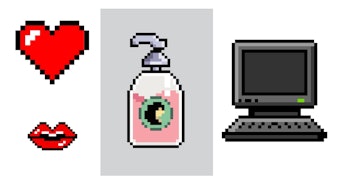"Cosmeto-textiles" made from high-tech fabrics that incorporate personal care ingredients such as slimming agents, perfumes and creams appeared on the fashion runway at the Feb. 4, 2007, annual lingerie trade fair in Paris, reported Reuters. Underwear designed to help slim or cool and refresh were a few of the concepts modeled; however, uncertainty as to whether such inventions would last or pass as a fad was prominent.
Several brands have attempted to launch such technologies in the past, but they never caught on, said the report. According to Hubert Lafont, chief executive of French lingerie firm Barbara, what interests consumers in the end are more traditional products.
However, other companies have proven that the technology works and can be a commercial success. Philippe Andrieu reportedly began his company Onixxa in 2003 with a pair of tights that incorporated a slimming agent. Now he has over 30 garments including slimming jeans under the Lytess trade mark and annual sales of €4.5 million (US$5.9 million), reported Reuters.
One US-based company launched a brand of cosmeto-textiles more than two years ago and now has clients around the world, including men's and women's underwear makers and manufacturers of socks and tights. The textiles used in these products contain aloe vera moisturizers and nutrients derived from seaweed or perfumes and claim to make people feel fresh or cool or to help keep skin moist.
Cosmeto-textiles reportedly contain microscopic capsules of ingredients that break as the fabric rubs skin, releasing the actives. The active life of any garment is limited to between 20 and 40 washes, depending on the ingredient, which is one of the limitations to these inventions.
An Italian company went a step further and promoted a textile comprising nano-particles of silver that reportedly kill bacteria on skin, among other properties. The difference between this material and micro-capsules is that it claims to last for life and does not release active substances, said the company in the report.
One expert commented that the opinions of such technologies could change in three years when European standards are created with common rules for both the cosmetic and textile industries.
-Reuters










